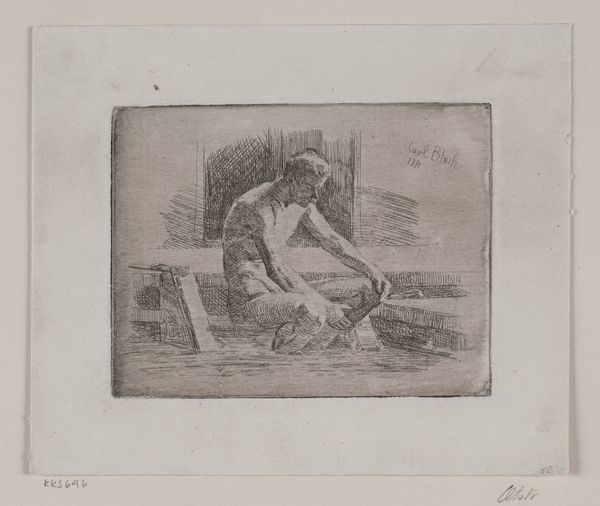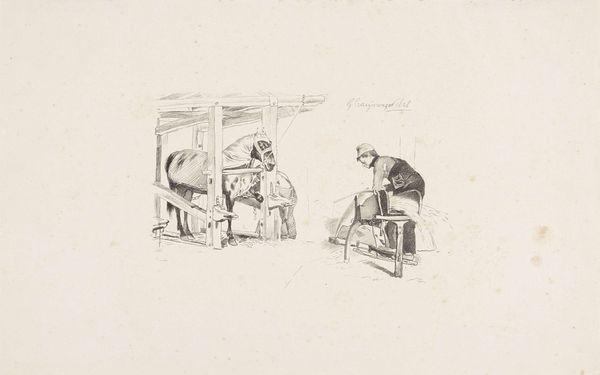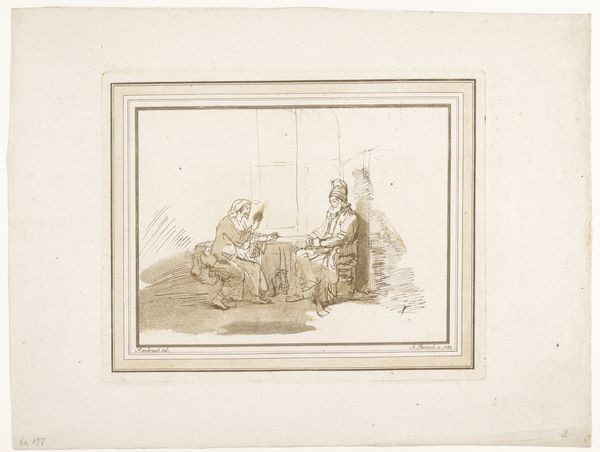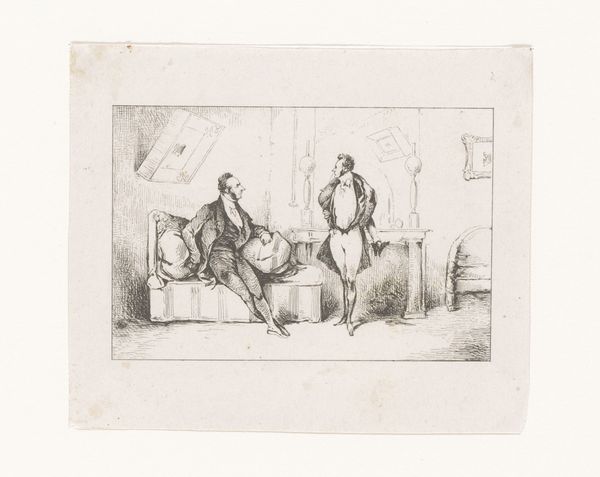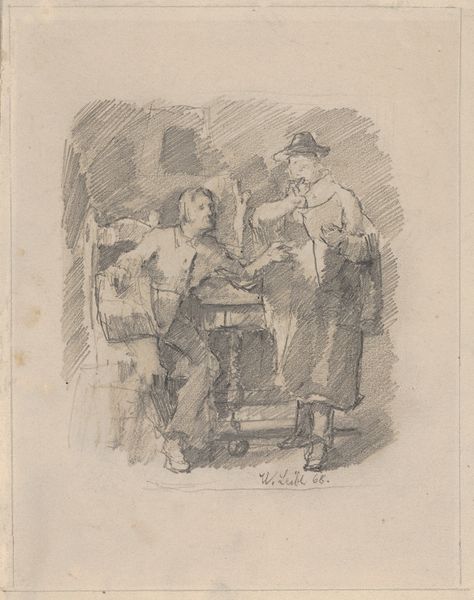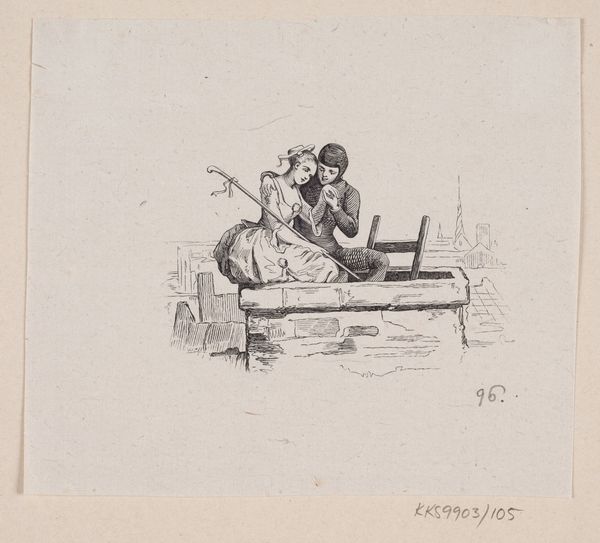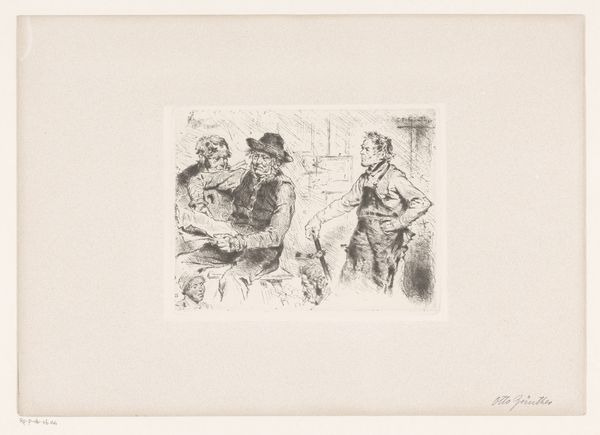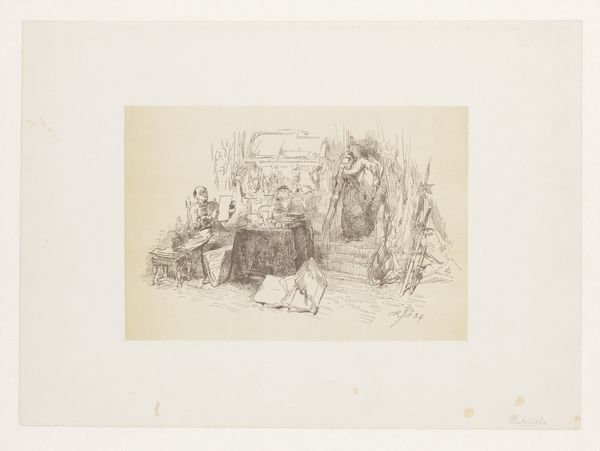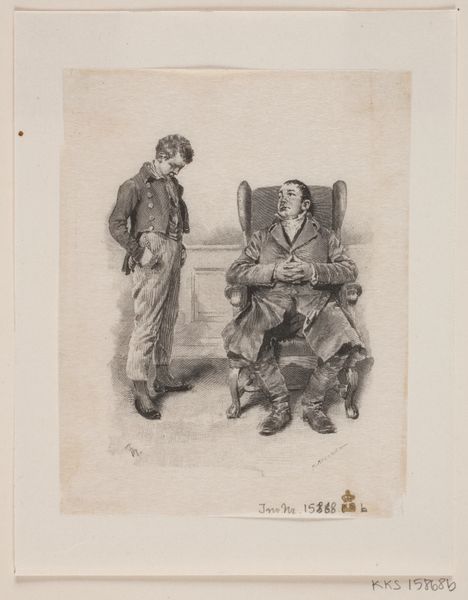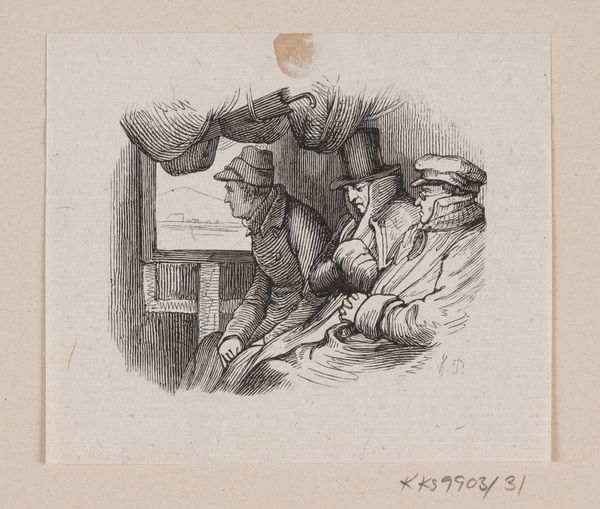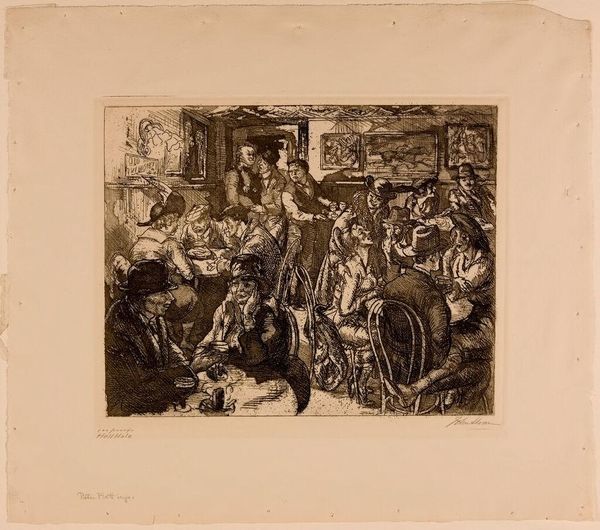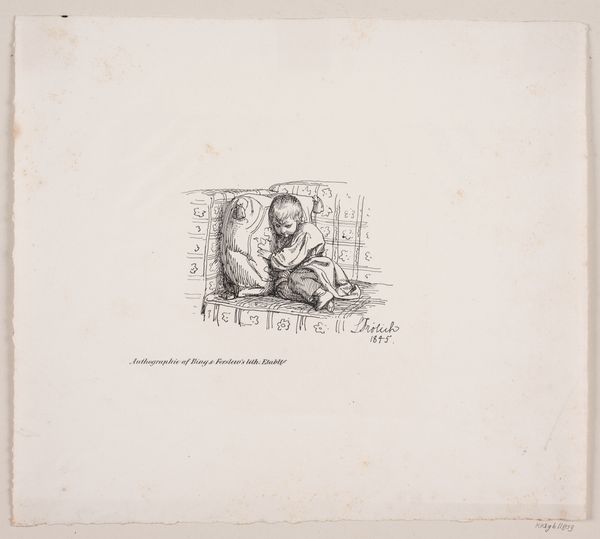
Prøvetryk til illustration til P. M. Møller: "En dansk students eventyr" 1884 - 1897
0:00
0:00
Dimensions: 75 mm (height) x 82 mm (width) (bladmaal)
Curator: This drawing, made with graphite, is a preparatory illustration by Henrik Arnold Hamilkar Sørensen for P.M. Møller's novel "En dansk students eventyr," or "A Danish Student's Adventures." It’s dated between 1884 and 1897. Editor: He looks completely worn out, doesn't he? The man sprawled in the armchair with his legs extended, it’s the very picture of late 19th-century bourgeois fatigue. Look at the weight of the shading used to create the suit and the slumped figure; that graphite is working hard! Curator: Sørensen’s work occupies a vital place within the visual culture of the period. As an illustrator, he wasn’t just decorating a text; he was interpreting and disseminating cultural values, in a society grappling with industrialization and shifting class structures. This print would have reached a broad audience, shaping perceptions of student life and societal expectations. Editor: Precisely, and this “weariness” isn't just personal, it's materially produced. Think about the availability of cheap printed matter enabled by industrial techniques, demanding constant content, endless illustrations. The graphite marks on the page are a testament to this demand, evidence of the pressure on artists like Sørensen to generate imagery. And even the subject’s garments: ready-made clothing indicating accessibility and commodification of once specialized crafts. Curator: I find it interesting to consider what message Sørensen was trying to send with this image in the context of "A Danish Student’s Adventures." Was it to romanticize or satirize the student's struggles? We have to remember that during this period, access to education was still largely restricted, reflecting societal hierarchies and unequal opportunities. Editor: Good point. The image certainly isn’t straightforward celebration of scholarship. Maybe it gestures towards the tensions arising from shifting socio-economic positions and the difficulty of advancement regardless of education—showing an emotional or physical reaction to being overworked and overburdened within society. It does ask us to consider not just the “romance,” but the material realities underpinning it all. Curator: Indeed. Seeing it through your lens gives a sharp material critique that brings new insight into its possible contemporary appeal. Editor: And considering the history makes me wonder how audiences, confronted with relentless content cycles today, would see it.
Comments
No comments
Be the first to comment and join the conversation on the ultimate creative platform.
